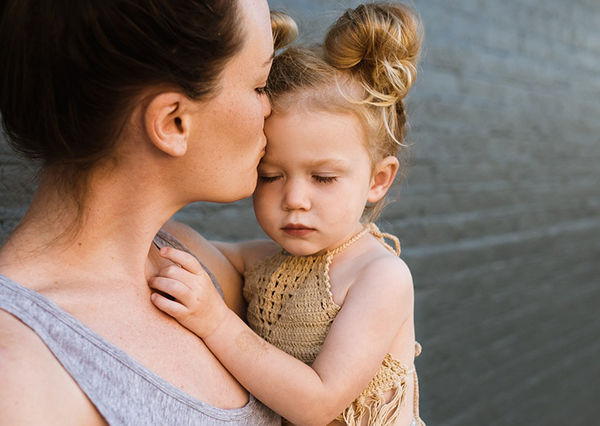New parents expect frequent diaper changes and sleepless nights, but most of them aren’t prepared for the physical tasks of carrying and holding an infant for hours each day. Lower back pain from lifting baby is a mutual complaint of new fathers and mothers.
There are procedures you can take to improve your body mechanics, relieve your pain and ease future back problems related to carrying your baby. This will lead to an improvement in your overall physical health. Below are some steps to follow.

Pain relief
Tip #1 – A moderate or mild back pain may respond positively to over the counter medicines like acetaminophen or ibuprofen. Seek advice from your doctor if your pain doesn’t improve. Recommendation-strength muscle relaxants or pain relievers may be suitable in some cases. Let your doctor know if you’re breastfeeding so that they can prescribe a medication which is safe for your infant.
Tip #2 – Heat packs or ice can help in reducing back pain. Hot bath soak can also provide relief. If you underwent cesarean section birth, ensure that your doctor gives you the go-ahead to recommence tub baths.
Tip #3 – When it comes to back pain caused by overworked muscles or sore, a massage can offer quick relief. At the same time, it is a perfect way for a new mum or dad to unwind.
>
Rest
Tip #1 – Never try to go back to normal activities too fast after your child is born. It is hard to find time to relax when you’re caring for an infant. A little self- care, probably, can assist you to run your household more smoothly. Remember that changing hormone levels in late pregnancies causes the joints and ligaments to relax; these parts remain more flexible even weeks after birth and are prone to injury.
Tip #2 – Ask family and friends to help you. Women who have experienced such type of birth require time to recover. Your doctor will monitor you in the postpartum period. You should wait approximately six weeks before returning to your usual activities.
Tip #3 – Avoid standing for long hours because the extra pressure accumulates on your back. If you want to stand, rest one leg on a raised surface like a stool. Use a footstool to lift your feet while sitting.

Maintain good body mechanics
Tip #1 – To heal wrist pain from lifting and/or to relieve pain in thumb when lifting, use correct body mechanics each time you lifting objects and your baby. The perfect technique is by using your legs, not your back. Don’t bow from the waist. Try to squat down by bending the knees and make sure you use the leg to lift. This helps you avoid creaky knees. You might be lifting numerous heavy objects, like a car seat and stroller. Move gently and be keen on your lifting skill to avoid injury.
Tip #2 – Maintain your back upright when breastfeeding and raise your child to the breast. Don’t lean over to bring down the breast to your baby. Relax in a chair with strong back and use a pillow to help in proper positioning. It may take time to learn; a lactation consultant can help you access discomforts and give recommendations for different breastfeeding positions.
Tip #3 – Bring your child to your chest before you lift. Back injury can occur when you lift the baby up with the arms outstretched or while turning or twisting to the side.
Tip #4 – Kneel in front of the baby while buckling her into the car seat. You will find yourself in an awkward situation if you buckle the car seat while standing outside. This twisting movement can lead to back discomfort.

Exercise
Tip #1 – An exercise plan can assist you to build the muscles which give support to your back. Ask your doctor’s permission before you start any new exercise regime. Begin with gentle ones, such as pelvic tilts, hamstring stretch and some few minutes of mild stretch.
Tip #2 – Knee exercises will help you deal with creaky knees and help you regain more physical function. Begin with a few different exercises that help strengthen the hamstrings, which are the back of thigh muscles used when bending the knee. Also, try some exercises that target the glutes. Bridging, clams, squad and calf raise, these exercises are classic and so effective, in fact, that it is even prescribed as part of knee physiotherapy after meniscal repair.
Tip #3 – Try to get back to the pre-pregnancy weight after childbirth. Overweight persons have frequent back pain with risks for various health problems. Ask a family doctor to recommend an eating plan. At this breastfeeding period, more calories are needed than before.
Disclaimer: Medical opinion and any other health-related information in this article is for informational purposes only and should not be considered to be a specific diagnosis or treatment plan for any individual situation. Always seek the direct advice of your own doctor in connection with any questions or issues you may have regarding your own health or the health of others.